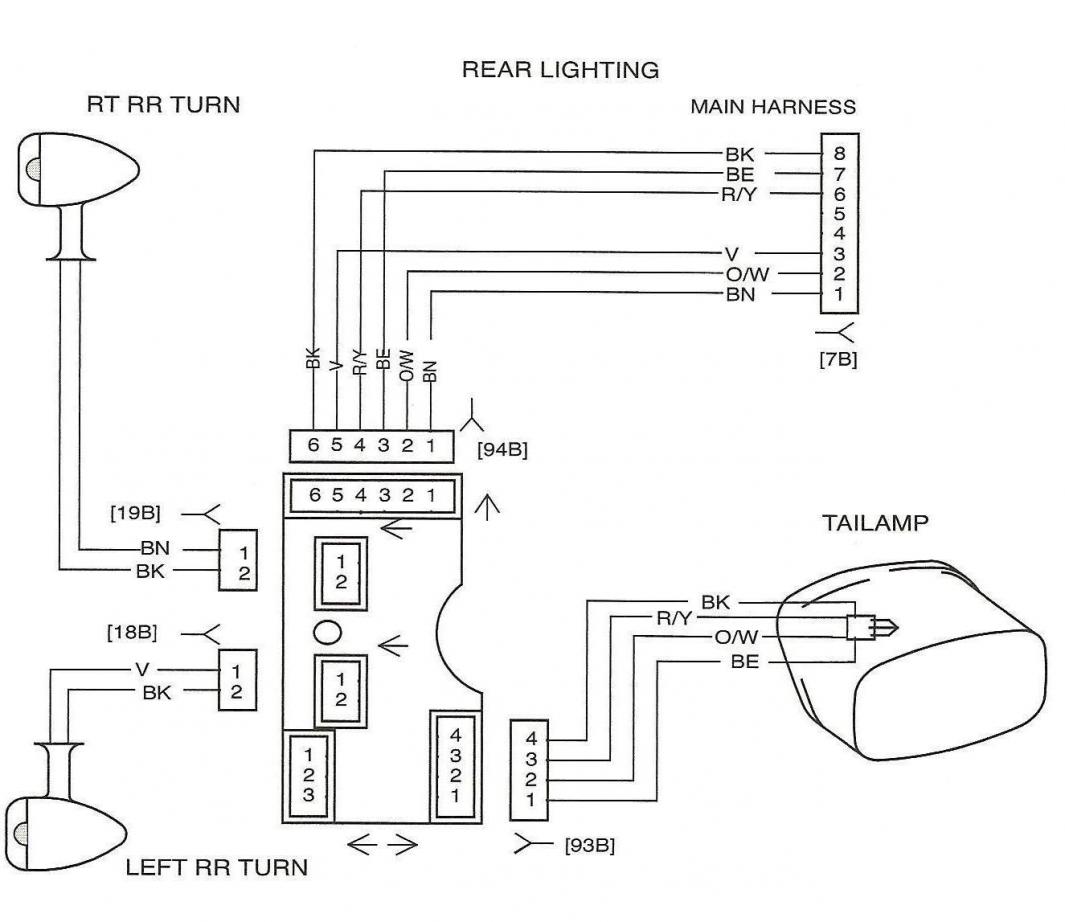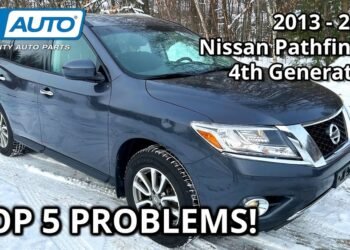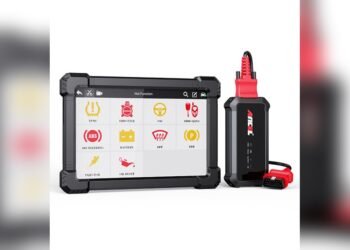Troubleshooting the rear brake on a Harley Davidson often involves checking the brake fluid and inspecting the brake pads. Ensure the brake line is free from leaks or damage.
Harley Davidson motorcycles are synonymous with power and freedom, but like any vehicle, they require regular maintenance to perform at their best. One common area that may need attention is the rear brake system. Riders might experience issues such as reduced braking power or unusual noises when applying the rear brake.
Understanding the basics of troubleshooting can save time and ensure safety on the road. This guide aims to provide Harley Davidson owners with straightforward, actionable steps to diagnose and fix common rear brake problems. By keeping these tips in mind, riders can enjoy a smoother, safer ride, maintaining the legendary performance of their Harley Davidson.
Introduction To Harley Davidson Rear Brake Issues
Harley Davidson motorcycles are known for their power and performance. Yet, like all machines, they can experience issues. One common area of concern lies within the rear brake system. Understanding and addressing rear brake problems is crucial for a safe ride. This section delves into typical symptoms and the importance of prompt troubleshooting.
Common Symptoms Of Rear Brake Problems
- Reduced braking power – Brakes feel less responsive.
- Strange noises – Squealing or grinding during braking.
- Pedal issues – Pedal feels spongy or too firm.
- Fluid leaks – Signs of brake fluid near the wheel.
Importance Of Timely Troubleshooting
Ignoring rear brake problems can lead to unsafe riding conditions. Timely troubleshooting prevents accidents and saves money on repairs. Regular maintenance ensures your Harley’s brakes are always ready for the road.

Credit: m.youtube.com
Initial Inspection Steps
Initial Inspection Steps are crucial for diagnosing issues with your Harley Davidson’s rear brakes. Proper diagnosis ensures safety and peak performance. Follow these steps methodically to pinpoint the problem.
Checking Brake Fluid Levels
Start with the brake fluid. Low levels can signal a leak or worn pads. Use these steps:
- Locate the rear brake fluid reservoir.
- Check the fluid against the min-max markers.
- Top up with the correct type if needed.
Tip: Always use fresh fluid from a sealed container.
Inspecting Brake Pads For Wear
Worn brake pads compromise braking efficiency. To inspect:
- Remove the wheel to access the brake caliper.
- Examine the pads for thickness.
- Replace pads if below the wear limit.
Note: Always replace brake pads in pairs for balanced braking.
Brake Disc Examination
Harley Davidson riders know the thrill of the open road. Yet, safety is key. A brake disc check is a must for smooth rides. This section dives into brake disc health. Learn to spot disc problems and check disc thickness.
Identifying Disc Damage Or Warping
Brake disc damage affects bike control. A visual inspection can reveal issues. Look for scratches, grooves, or rust. Any changes in disc color can signal overheating. Overheating may lead to warping. Warping creates a wobble or vibration when braking. Feel for these signs during a test ride.
Measuring Disc Thickness
Correct disc thickness ensures effective braking. Use a micrometer to measure disc thickness. Measure at several points around the disc.
| Location | Thickness |
|---|---|
| Point 1 | Check value |
| Point 2 | Check value |
| Point 3 | Check value |
Compare measurements to the manufacturer’s specs. Replace the disc if it’s below minimum thickness. This ensures a safe and responsive brake system.
Hydraulic System Assessment
When it comes to Harley Davidson maintenance, the hydraulic brake system demands attention. Proper functioning of the rear brakes is crucial for safety on the road. This section digs into the hydraulic system assessment, ensuring smooth and reliable braking performance.
Bleeding The Brake Lines
Bleeding the brake lines is a top priority. Air trapped in the system can cause brake failure. This process involves:
- Opening the bleed valve
- Applying pressure to the brake pedal
- Closing the valve before releasing the pedal
- Repeating until only fluid comes out
Use a clear tube and a catch bottle to avoid mess and monitor air bubbles.
Inspecting For Leaks And Hose Condition
Next, inspect for leaks. Look for signs of brake fluid on the ground and along the brake lines. Check hoses for:
| Condition | What to Look For |
|---|---|
| Dryness | Cracking or brittleness |
| Wear | Surface damage or thinning |
| Flexibility | Stiffness or lack of pliability |
Replace hoses that show signs of wear or damage to prevent brake failure.
Caliper Functionality Check
Motorcycle safety hinges on well-functioning brakes. A Harley Davidson’s stopping power often depends on the rear brake caliper. Regular checks are key. Let’s dive into the ‘Caliper Functionality Check’.
Caliper Piston Examination
Start with the caliper piston. It pushes the pads against the rotor. Dirt or damage leads to sticking. A stuck piston compromises braking.
- Inspect the piston surface for rust or grime.
- Clean with brake cleaner; avoid harsh abrasives.
- Check for smooth movement; it should retract easily.
Slider Pins And Caliper Bracket Inspection
Slider pins allow the caliper to move freely. They need regular lubrication. The caliper bracket holds the assembly. It must be secure and aligned.
| Step | Action | Result |
|---|---|---|
| 1 | Remove pins | Clean and inspect for wear |
| 2 | Lubricate pins | Use high-temperature grease |
| 3 | Check bracket | Ensure no cracks or damage |
Proper maintenance ensures peak performance. Address issues promptly for safe rides.
Master Cylinder Evaluation
When your Harley Davidson’s rear brakes fail, you start with the ‘Master Cylinder Evaluation’. This vital component pushes brake fluid through the lines. Proper function is essential for safe rides. Let’s look at how to assess the master cylinder’s health.
Testing Master Cylinder Pressure
To test the master cylinder pressure, you’ll need a brake pressure gauge. Follow these steps:
- Attach the gauge to the brake bleeder valve.
- Pump the brake lever and observe the reading.
- Consistent pressure indicates a healthy cylinder.
- Fluctuating readings signal issues.
A proper pressure test ensures the master cylinder works right. It must maintain enough force to engage the brakes firmly.
Seal And Gasket Inspection
The seals and gaskets in the master cylinder prevent leaks. Inspect these parts for:
- Wear and tear: Look for any visible damage.
- Fluid residue: Presence may indicate a leak.
- Elasticity: Brittle seals need replacement.
Replacing worn seals and gaskets keeps the brake system sealed. This prevents air from entering and causing brake failure.
Troubleshooting The Abs
Harley Davidson riders know the importance of a reliable ABS. It ensures safety and precise braking. But what if it fails? Let’s troubleshoot the ABS system.
Abs Sensor Cleaning And Testing
ABS sensors are crucial for system functionality. Dirt and grime can cause false readings. Regular cleaning is a must.
Follow these steps:
- Turn off your bike.
- Locate the ABS sensors near the wheels.
- Clean them with a soft cloth.
- Check for damage or corrosion.
For testing, use a multimeter. Check the sensor’s resistance. Compare it to the standard value.
Diagnosing Abs Module Issues
The ABS module controls the system. A malfunction can lead to brake failure. Proper diagnosis is critical.
Signs of a faulty module:
- ABS light stays on.
- Unresponsive brakes.
- Erratic brake behavior.
Use a diagnostic tool to read error codes. The codes point to specific issues. This helps target the problem.

Credit: www.youtube.com
Quick Fixes For Common Issues
Riders know the thrill of a Harley Davidson. But sometimes, brakes act up. No stress. Quick fixes can help. Let’s look at common issues with rear brakes on your Harley. A few tweaks might get you back on the road swiftly and safely.
Adjusting The Rear Brake Lever
Brake lever adjustment is key for proper control. Here’s how:
- Find the adjustment nut near the lever.
- Turn the nut. Test the lever’s feel and position.
- Keep adjusting until you find the right balance.
A well-adjusted lever means better brake response.
Simple Diy Repairs
Some repairs don’t need a mechanic. Try these:
- Check the pads. Replace if worn.
- Inspect the brake lines for leaks or damage.
- Make sure the fluid level is right.
- Clean the brake caliper for dirt-free operation.
Regular maintenance prevents most issues. Safe riding!
When To Seek Professional Help
Love for Harley Davidson runs deep, but sometimes, your ride needs expert care. Rear brake problems can be tricky. You might need professional help. Let’s explore when it’s time to call in the pros.
Recognizing Complex Brake Issues
Some brake issues are beyond basic fixes. Look out for these signs:
- Odd noises when you apply the brakes
- Brake fluid leaks near the rear wheel
- Uneven brake pad wear, indicating a deeper issue
- Brakes feel spongy or fail to respond
If you notice these, a professional should check your bike.
Finding A Reputable Service Center
Choose a service center wisely. Follow these steps:
- Look for centers specializing in Harley Davidson models.
- Check online reviews and ratings.
- Ask fellow riders for trusted recommendations.
- Ensure the center has certified technicians.
Right expertise ensures your Harley’s longevity and safety.

Credit: www.hdforums.com
Preventive Maintenance Tips
Keeping your Harley Davidson in top shape is key. Preventive maintenance tips for the rear brakes will help. Follow these steps to avoid common issues.
Regular Maintenance Schedule
Sticking to a regular maintenance schedule keeps brakes working well. Here’s how:
- Check brake fluid monthly. Change it every two years.
- Inspect brake pads for wear. Replace if thin.
- Look at brake lines for cracks or leaks. Fix them fast.
- Clean brake components during service. Use the right cleaner.
Long-term Care For Rear Brakes
Long-term care extends brake life. Follow these tips:
- Avoid hard stops. They wear brakes faster.
- Use engine braking to help. It saves the brake pads.
- Keep the bike’s weight in check. Heavy loads strain brakes.
- Store your bike properly. Keep it dry and clean.
| Task | Frequency |
|---|---|
| Brake Fluid Check | Monthly |
| Brake Pad Inspection | As Needed |
| Brake Lines Check | Annually |
| Brake Cleaning | During Service |
Frequently Asked Questions
Why Is My Rear Brake Not Working Properly?
Your rear brake may not work properly due to worn-out pads, air in the brake lines, or a misaligned caliper. Regular maintenance and prompt replacements can help avoid these issues, ensuring your brakes function smoothly.
Why Are My Rear Brakes Not Releasing?
Rear brakes may not release due to seized calipers, worn brake pads, or faulty brake lines. Regular maintenance helps prevent these issues. Always consult a professional for repairs to ensure safety and proper functionality.
What Are The Symptoms Of Bad Rear Brakes?
Symptoms of bad rear brakes include unusual noises when braking, a vibrating brake pedal, longer stopping distances, and the vehicle pulling to one side during braking. Regular inspections ensure safety.
Why Is My Rear Bike Brake Not Working?
Your rear bike brake may not work due to worn pads, a loose cable, misaligned calipers, or a lack of hydraulic fluid. Regular maintenance checks can prevent these issues.
Why Do Harley Brakes Fail?
Harley Davidson brakes can fail due to worn pads, leaking fluid, air in the brake lines, or malfunctioning calipers. Regular maintenance is key to prevention.
Conclusion
Troubleshooting the rear brake of your Harley Davidson doesn’t have to be a daunting task. With the right approach, common issues can be quickly identified and resolved. Remember, regular maintenance is key to ensuring your ride remains safe and enjoyable.
Keep these tips in mind, and you’ll have a smoother journey ahead. Safe travels!

















